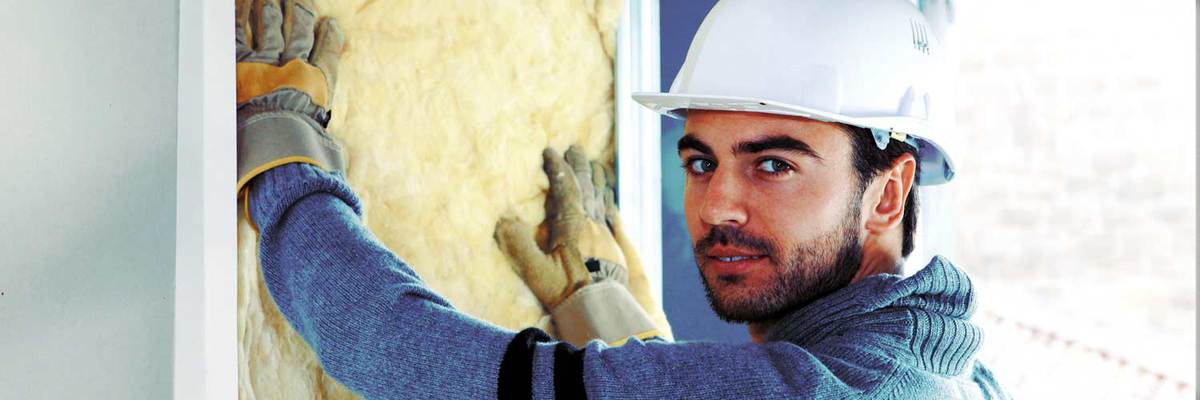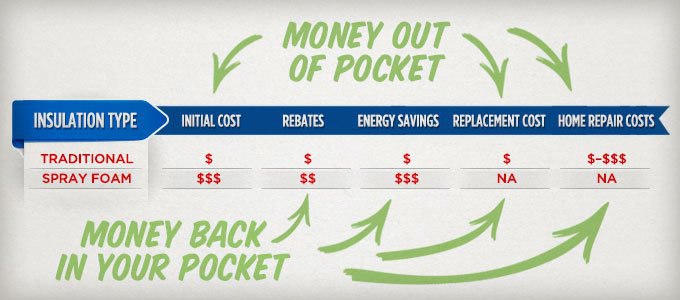Cheap Insulation: Why the Cheapest Option Could Cost Your More


Trying to insulate your home on a budget? You're not alone.
We get it -- those ads for cheap insulation can be super tempting. Whether it's a big-box store sale or a roll of fiberglass that promises a quick fix, it can feel like you're scoring a deal. But here's the truth: cheap house insulation often leads to expensive headaches.
At RetroFoam of Michigan, we understand that foam insulation isn't the cheapest option, but we do offer a material that offers the best return on investment. We've been in the insulation business long enough to know that too good to be true prices usually are.
So, let's break down why that "great deal" might end up costing you more in the long run -- and what you should consider instead.
The Real Cost of Cheap Home Insulation

If you're hunting for cheap ways to insulate your house, you're probably trying to cut costs now.
But here are a few ways those lower upfront costs can lead to much bigger bills later.
Air Leaks = Money Leaks
Traditional insulation, like fiberglass and cellulose, still allows for air movement.
That means your conditioned air escapes, and outside air sneaks in -- forcing your heating and cooling system to work overtime.
That leads to:
- Higher monthly energy bills
- Extra wear and tear on your HVAC system
- Less comfort year-round
You'll Probably Replace it Sooner
Fiberglass and cellulose don't last forever.
Over time, they can:
- Settle or sag
- Breakdown with moisture exposure
- Need raking or fluffing to maintain performance
Cheap home insulation problems like these eventually lead to needing replacement -- costing you again.
Mold and Moisture Can Move In
Cheaper insulation materials can hold moisture when condensation forms inside your walls.
That moisture against wood framing can lead to:
- Structural damage
- Mold growth
- Expensive remediation
It Can Attract Pests
Insulation that allows air leaks can also invite critters in.
Rodents and bugs follow air movement to find warm nesting spots -- often inside your walls.
You're then left paying for:
- Pest control services
- Damage cleanup
- Insulation removal and replacement
Your Furnace and AC Will Work Overtime
If your insulation isn't creating a solid barrier, your mechanicals are going to have to work way harder than they should -- leading to:
- Increased maintenance and repair costs
- Shorter system lifespan
- Rising energy bills
You'll Still Be Paying Too Much on Your Energy Bill
You installed insulation to save money, right?
But if it still lets air pass through, your energy bills won't change much. That "cheap spray foam insulation" or bargain-roll fiberglass just won't get the job done like true air sealing can.
Allergy Issues Could Cost You Too
Materials like fiberglass can trap dust, pollen, and other allergens.
If you or your family suffer from allergies, that cheap insulation might lead to:
- Poor indoor air quality
- Increased allergy symptoms
- More doctor visits and medication costs
So... Is Spray Foam Insulation Cheaper Than Fiberglass?
On the price tag? No.
But in terms of cost over time? Absolutely.
Spray foam insulation creates an air seal, which traditional materials simply can't do. That air seal:
- Keeps outside air (and allergens) out
- Helps your home stay at a consistent temperature
- Reduces the strain on your furnace and AC
- Lowers your energy bills every month
If you've ever noticed how a foam cup keeps your drink hot or cold, it's the same science. Foam insulation works like that cup -- protecting your home from outdoor temps.
Where to Buy Cheap Insulation... and Why You Might Not Want to
You'll find plenty of cheap insulation at home improvement stores.
And if you're insulating a shed or detached garage with minimal use, those could be okay short-term solutions.
But if you're insulating your home -- the place where you sleep, raise a family, and spend most of your time -- don't make decisions based on price alone.
Instead of asking "where to buy cheap insulation," ask:
- What will this cost me in energy bills?
- Will I need to replace this in 5 to 10 years?
- Will this actually make my home more comfortable?
Why Foam Insulation is Worth the Investment
Foam insulation isn't the cheapest up front, but it saves money in the long run -- and helps avoid a laundry list of issues that traditional insulation can cause.
Think of it like this -- you can pay off your house, your car, and your credit cards, but you'll never stop paying for heating and cooling. Investing in better insulation now means putting a little money back in your pocket every single month.
If you're weighing your options and want to talk through what insulation makes sense for your budget and home, fill out the form on our website or give us a call at 866-900-3626.
Key Points:
- Cheap insulation options may cost less upfront, but often lead to higher long-term costs.
- Traditional materials like fiberglass and cellulose can sag, trap moisture, invite pests, and still allow air movement.
- Cheap spray foam insulation doesn't guarantee quality -- look for reputable contractors and proven products.
- Foam insulation creates an air seal that prevents energy loss and improves home comfort.
- Over time, spray foam can pay for itself through energy savings, fewer repairs, and better indoor air quality.
Related Articles
The Total Lifetime Cost of Foam Insulation: It’s Less Than You Think
How to Plan and Pay for Your Foam Insulation Cost
Types of Insulation Rebates in Michigan (Standard Mail-In vs Home Performance)
About Amanda Emery
Amanda previously has worked as a breaking news and crime reporter, TV news producer, and editor in Flint and Detroit. Throughout her career as a journalist, she has won several awards from The Society of Professional Journalists - Detroit Chapter and the Michigan Press Association. As part of the RetroFoam of Michigan family, Amanda uses her experience as a journalist to write content that will help educate homeowners on the benefits of foam insulation. When Amanda isn’t writing, she’s spending time with her husband and rescued huskies. She also loves knitting, making art, cooking, and hosting dinner and a movie night for friends and family.


